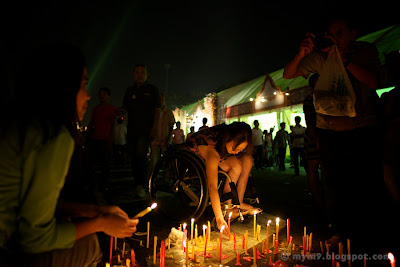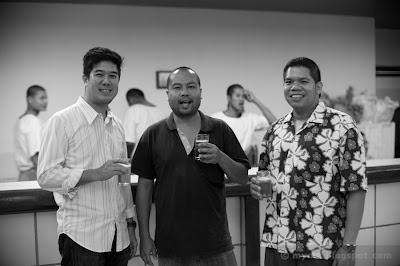In the recent months, the ‘M9 fever’ seems to be spreading among people around me. I’m not an experienced Leica-user, and definitely not a Leica evangelist. But quite a few friends and people I know have either taken interests in the M9, or have already bought one. I can’t help but wonder what makes the M9 so special.
Perhaps it’s the attraction of the rangefinder, or the fact that there are plenty of lenses, old, new and for every budget, available for the M9. Or is it merely its classic appearance, and pure bragging rights? Well, it is difficult to say. What I can say, for me, is that the M9 seems to allow me to shoot more seamlessly than other cameras I own. It doesn’t get in my way, nor my subject’s way when shooting. How do I know this? Recently I brought my DSLR out of the cabinet, along with a few prime lenses. I had not used it for a little over a year since I bought the M9, mostly because of its weight and bulk. Well, that has not changed much since it’s still the same camera. My ‘default’ f2.8 zoom is now gone, and I’m left with two primes (one AF, and one MF). So the kit maybe fractionally lighter, but its bulk remains.
After several days, and a few hundred shots later, I’m vividly reminded why I stopped shooting DSLR. It’s certainly not because of its poor image quality, far from it, in fact. Image quality, IMHO, is second to none. In some aspects, it’s superior to Leica M, namely in noise, and dynamic range in high ISO. Be it manual or auto focus, DSLR can be just as fast as a Leica M. So that’s not really a problem. Sure the default focusing screen is not a split-screen type like old film bodies, so you rely more on the green light to confirm focus. It’s not exactly inferior to rangefinder, IMHO, it’s just different.
My main reason for not using DSLR that much is the imposing size and mass of a pro DSLR. Imagine yourself being photographed, you see a photographer approaching with a big black mass and a sub-bazooka-sized lens. Fire a few shots, and the mirror swings and clicks audibly. It can be quite intimidating being on the other side of the lens. What else? The menu hierarchy is also perplexing with too many settings for, what I think, too many buttons on the camera. Oh, and there’s that weight on my shoulder. That’s it.
However, I’m quite sure that many others think just the opposite. Its bulk offers sturdiness and ruggedness that are not commonly found in smaller cameras. The continuous shooting speed is perfect for action shots, while the comprehensive menu offers granular adjustments to suit every need and style of photography.
I can also say a thing or two about compact cameras and Micro Four Thirds (MFT). The compacts, being relatively inexpensive, usually come with lower expectations from the users. MFT system, however, can be costly depending on lenses, and models. Many compacts can now shoot RAW, and have very fast lens up to f1.8 on some models. Sure, they have their limitations like AF speed (less suitable for action photography) and noise in high ISO. MFT system promises more and this is where trouble begins. The format is not exactly new, yet there is only a limited selection of lenses for MFT bodies, namely from Panasonic and Olympus. Not only is the selection of lens is small, the two companies are asking big money for their glasses. Yet, theses lenses are only average in performance, while in some cases, are tied to manufacturer’s own bodies for optimum results. Last but not least, there’s no optical viewfinder for MFT system. Olympus EVF is a great example, but it’s still electronic, and makes the camera bulky.
The bottom line is that you must choose a camera system that suits your style of photography most. There's a good chance that the lightest and smallest system isn’t your best option. If you like the speed of DSLR, its superior noise suppression, and vast lens selection, get the smallest DSLR that meets your needs. You will have to live with the weight and bulk to get the pictures you want. If you don’t need big zooms, fast AF, and if you’re fortunate enough to afford the M9, go for it. But you’ll have to get used to the manual focus, a slightly different way to meter and to compose, and a good chance that your sensor will collect dust in no time. Maybe your style of photography is suitable for MFT system where you enjoy good quality photos (that most compacts cannot deliver) with minimal weight and equipment to carry. Don’t forget that most of the time, it’s the person behind the camera that matters most.
The following set of images are taken with different types of camera, from compact, Micro Four Third, APS-C, full-frame DSLR, and the M9. As long as they let me shoot what I want and how I want, I have no problem. Unfortunately, some of these cameras did not deliver the user experience I had expected. For me, what matters most is that a good camera should work with the photographer, enabling the photographer to make the right exposure at the right moment. Happy shooting!
Wisrute























































